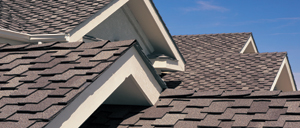 Many of Asphalt magazine’s readers are familiar with paving asphalt, its properties and characteristics. They know the difference between a PG 76-22 and a PG 58-28. And they know when and where each type should be used. But readers are probably less familiar with roofing asphalts, how they are made and how they differ from paving asphalts.
Many of Asphalt magazine’s readers are familiar with paving asphalt, its properties and characteristics. They know the difference between a PG 76-22 and a PG 58-28. And they know when and where each type should be used. But readers are probably less familiar with roofing asphalts, how they are made and how they differ from paving asphalts.
What’s the Difference?
From a manufacturer’s point of view, roofing and paving asphalts are similar, and there is little difference in how they are refined. Some in the paving industry think of roofing asphalt as an exotic blend of sweet (light, low in sulfur) and sour (heavy, high in sulfur) crudes but this is not the case.
Like paving asphalt, roofing asphalt starts as the bottom material from the refining vacuum tower. Generally, roofing flux is a softer, higher penetration material than paving asphalt. Based on their available crude slate and desired product line, several asphalt refiners choose to not produce roofing asphalt.
Like the paving industry, the roofing manufacturers have adopted standardized tests. These tests are identified in ASTM D 312, Standard Specification for Asphalt Used in Roofing Materials. The tests for characterizing the properties of roofing asphalt include:
- Penetration (D 5, Test Method for Penetration of Bituminous Materials),
- Softening Point (D 36, Test Method for Softening Point of Bitumen),
- Flash and Fire Points (D 92, Test Method for Ductility of Bituminous Materials), and
- Solubility (D 2402, Test Method for Solubility of Asphalt Materials in Trichloroethylene).
Additionally, roofing asphalt characterization includes tests for weathering, ASTM D 4798, Standard Practice for Accelerated Weathering Test Conditions and Procedures for Bituminous Materials.
Weatherometer
The weathering test (ASTM D 4798) consists of cyclic exposure to light and water spray. The Xenon-Arc weatherometer compares the weathering characteristics of the test material to a reference material with known outdoor weathering characteristics. The weatherometer models how asphalt shingles react to thermal shock. The environment in Florida is a good example of high thermal shock—expansion and contraction happens daily. The sun beats down, heating the shingles, then the rain comes, immediately cooling the shingles.
ApplicationsThe three basic types of roofing asphalt are:
- Coating-grade asphalt, oxidized asphalt used to manufacture roofing materials for a variety of roofing systems, such as asphalt shingles.
- Mopping-grade asphalt, an oxidized asphalt that is melted and used in the construction of built-up modified asphalt systems.
- Saturant-grade asphalt, a non-oxidized asphalt used to manufacture roofing materials for a variety of roofing systems, such as asphalt shingles, polymer-modified asphalt roofing, reinforcing and underlayment felts, and roll roofing.
Asphalt shingles and certain roll roofings fall into the “prepared” category. They consist of a base of asphalt saturated felt with an added asphalt coating and, usually, a surface of mineral granules. For builtup roofing, the components are manufactured and delivered to the job, and the roofing itself is built up directly on the roof deck in a series of layers or plies.
Performance Issues
Paving technologists are concerned with rutting and cracking issues. Asphalt roofing technologists target thermal shock, low temperature cracking and staining. To date, roofing manufacturers have not yet adopted standard Superpave performance grades and methods for evaluating roofing materials (primarily because there is no focused government entity promoting its use).
Staining is another important issue with asphalt roofing materials. The separation of oil components can cause staining in asphalt roofing products. ASTM D 2746, Standard Test Method for Staining Tendency of Asphalt, measures the thermal stability of roofing asphalt, or the tendency for oil components to separate spontaneously.
Staining, as much an esthetics issue as a performance issue, occurs on the surface of the shingle. The staining tendency of roofing products is influenced by storage conditions of time and temperature and by the amount and distribution of asphalt placed on the shingle.
Thermal Issues and Durability
Low temperature cracking of shingles and built-up roofing materials is also an important performance issue. The ability of roofing materials to withstand thermal shock, both from low temperatures in cold climates and from rain and sun in hot, wet climates, is essential for the durability of asphalt roofs.
To address these cracking concerns, modified asphalts are now being used in underlayments and membranes and sealing seams. Manufacturers are also beginning to use modified asphalts in shingle applications to lessen cracking.
Warrantees play an important part in the marketing and sales of roofing materials, more than in the marketing of paving materials. Warrantees are relatively new to asphalt pavements. Roofing manufacturers routinely provide warrantees on their products—up to 50-years on some shingle roofs. Warrantees of 3 to 10 years are typical for pavements.
Promising Future
One challenge that asphalt roofing manufacturers face is dealing with changing demands at the refinery. Most refineries are geared to produce fuels rather than roofing fluxes. As roofing manufacturers become more knowledgeable and experienced with new technology, such as polymer modification, they will develop new technology and new products to meet old problems.













